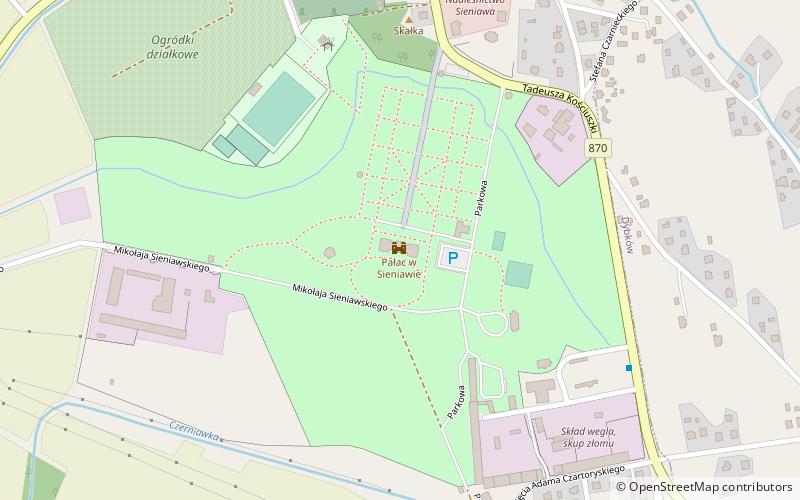Pałac w Sieniawie


Facts and practical information
Palace in Sieniawa - built by Grand Crown Hetman Adam Mikołaj Sieniawski in the early 18th century, it acquired its present-day appearance during a reconstruction in 1881-1883 carried out by the Czartoryskis.
In the years 1664-1680, next to the area of today's park and palace, Mikołaj Hieronim Sieniawski began to build a fortress of defensive character. It had a square plan with four earth bastions in the corners. There was also a wooden dwelling house, not identified today.
At the beginning of the eighteenth century, the founder's son, Adam Mikołaj Sieniawski, established a park here and built an orangery in the years 1718-1720. After its reconstruction, the orange house began to be called the summer palace in 1726. By the end of the eighteenth century, the palace had been rebuilt at least three times. At the beginning of the nineteenth century, its appearance was described by Leon Dembowski in the book "In my memories" as follows: The Sieniawski palace was made of brick, had no floors and at that time, apart from a huge hall, it contained one large living room and several rooms, which were the dukes' apartments; a huge organ was placed in the hall, and this hall was the place of common dining. In the drawing-room a few English caricatures and a number of engravings, depicting the valiant deeds of the Austrian army in its campaign with the French, were the only ornaments. A billiard table was placed in one of the corners. The Czartoryskis already owned the palace.
In the years 1881-1883 the palace was rebuilt according to the project of Boleslaw Podczaszynski. Storeys were added above both wings and the palace gained its appearance and late baroque character preserved to this day. It had 36 rooms and the cubic capacity of 2088 m³.
During World War I, Prince Adam Ludwik Czartoryski, the Ordynat of Sieniawa, gave the rooms of the palace to a field hospital for infectious Austrian soldiers. The palace was destroyed. Only temporary protection was made and after the war the duke lived in a wooden manor house next door. In the late 1930s, Prince August Czartoryski began renovation of the palace, but it was interrupted by World War II.
The palace had its greatest significance in the 19th century when it was one of the main residences of the Czartoryskis. It began to play a role of one of the centers of Galician political, intellectual and cultural life. Julian Ursyn Niemcewicz and Tadeusz Kościuszko were guests here. Tsar Alexander I was a guest there. Juliusz Kossak left a painting of the palace to commemorate his visit.
Despite the Czartoryskis' merits as patrons and collectors of art, Sieniawa did not have a very rich collection. The palace walls were decorated with portraits of the Sieniawski, Czartoryski and Poniatowski families. A cycle of miniatures illustrating Ovid's "Metamorphoses" attributed to Norblin was kept here. The rooms were furnished with valuable furniture. According to a list from 1914, the rooms included two Danzig closets, Danzig chests, six armchairs covered with curtains and 24 chairs inlaid with ivory.
The palace had no host until the 1980s. It lay in ruins and was robbed. Only a new owner, company "Igloopol" renovated and actually rebuilt the structure of the palace in the 80s. In the 1990s the palace became the property of AWRSP, which brought the palace and the surrounding park and accompanying buildings to their current state. In 2018, thanks to the purchase of the Czartoryski collection by the Ministry of Culture and National Heritage, the owner of the property remained the State Treasury, while the complex will be, as before, at the disposal of KOWR.
Currently, the palace houses a hotel with a restaurant in the manor annexe. It is also a venue for numerous meetings and conferences.
24 Tadeusza KościuszkiSubcarpathian
Pałac w Sieniawie – popular in the area (distance from the attraction)
Nearby attractions include: Cerkiew Wniebowstąpienia Pańskiego, Kościół pw. Najświętszego Serca Jezusowego, Church of the Sacred Heart, Cerkiew Zaśnięcia NMP.




